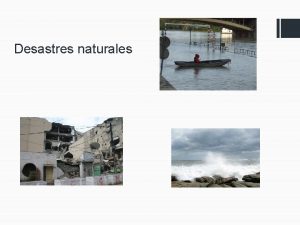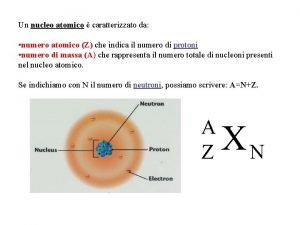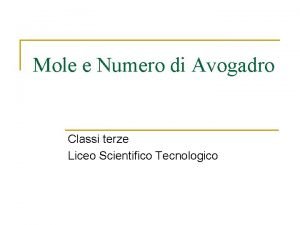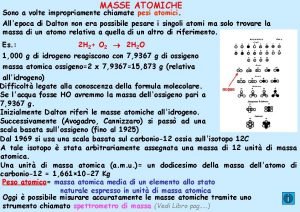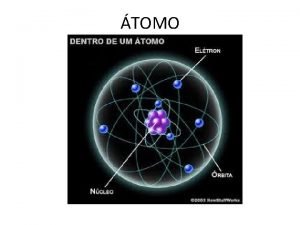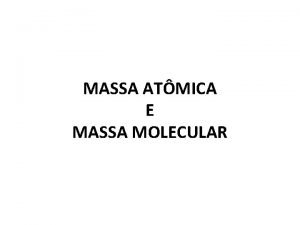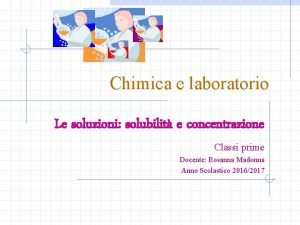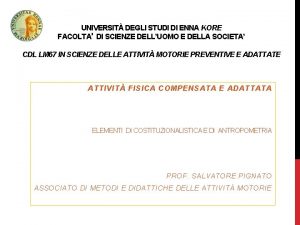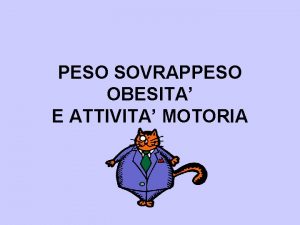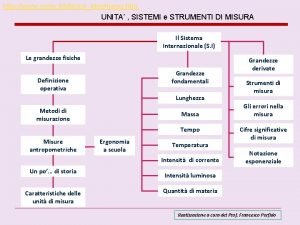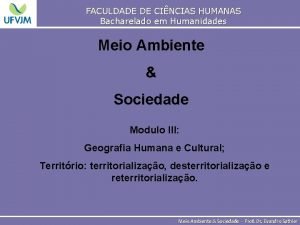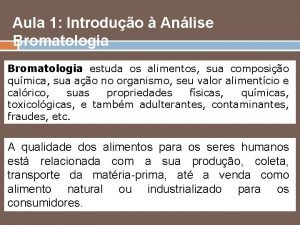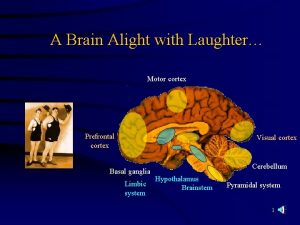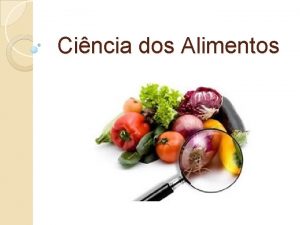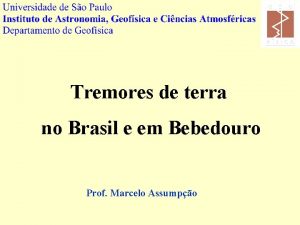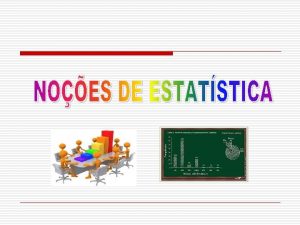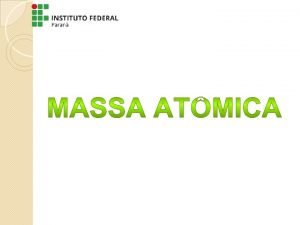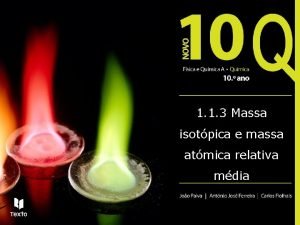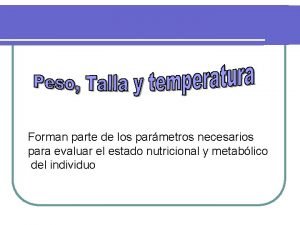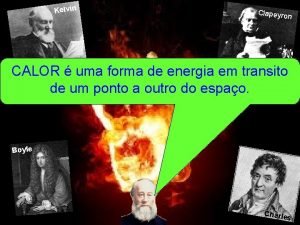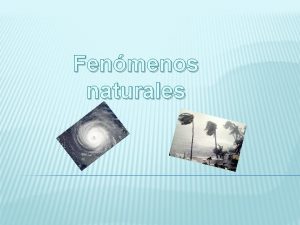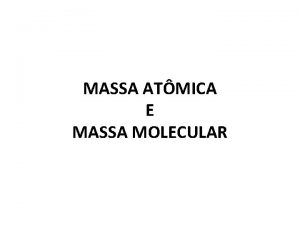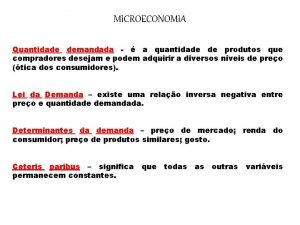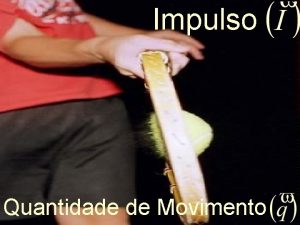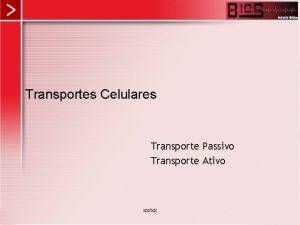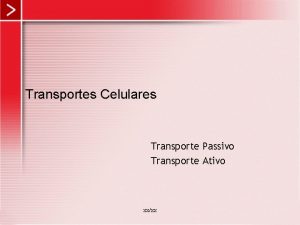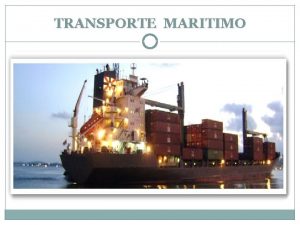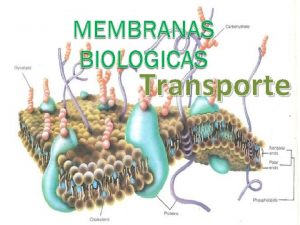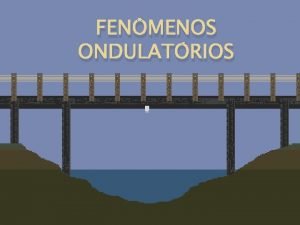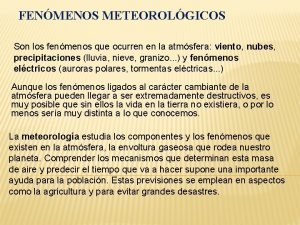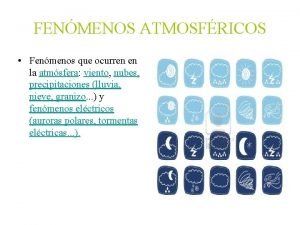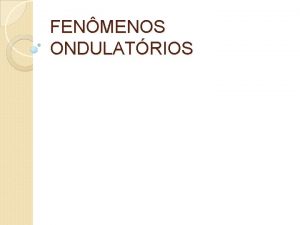INTRODUO Fenmenos de Transporte estuda como massa quantidade






























- Slides: 30

INTRODUÇÃO • Fenômenos de Transporte: estuda como massa, quantidade de movimento, calor e outras formas de energia são transportadas por um meio sólido ou continuamente deformável. Transporte de grandezas em meios continuamente deformáveis ou sólidos Transferência de Calor (massa) Mecânica dos Fluidos Termodinânica Define relação entre propriedades (P, T, U, H, S, V etc) para sistemas em equilíbrio.

Termodinâmicas Propriedades Estados de uma substância simples Uma vez conhecido duas propriedades de uma substância simples, todas as outras propriedades podem ser determinadas: densidade, energia interna, entalpia, entropia, calor específico, coeficiente de expansão, velocidade do som, etc.

• O transporte de quantidade de movimento (velocidades), turbulência, calor (temperatura), massa (concentração) e outras grandezas deve-se ao campo de velocidades

• Fluido é um meio que se deforma continuamente quando sujeito a uma tensão. • Uma camada de fluido desliza sobre a outra e a razão entre a tensão aplicada e a taxa de deformação é a viscosidade do fluido

Applications of Thermal-Fluid Sciences The human body Air-conditioning systems Car radiators Airplanes Power plants Refrigeration systems

Thermal-Fluid Sciences Water heater, Shower Electric or gas range Heating / air-conditioning Refrigerator TV, VCR set Humidifier Sprinkler system

• Arrasto e Forças em Corpos

• Tranferência de Calor

Energy Conversion

Hydro-Power Plant

Hydroelectric Dam Engineering

Solar Energy

Wind Energy

Automotive Engineering

Naval Architecture/Ocean Engineering

Aerospace Engineering

Microprocessor Engineering

Chemical/Petroleum Plant Engineering

Agricultural Engineering

Air Conditioning and Refrigeration Engineering

• Turbina a gás para propulsão Compressão, Combustão e Expansão Requer conhecimentos de Mecânica dos Fluidos, Transferência de Calor e Termodinâmica

• Módulo combinado de eletricidade e vapor; 4 x 16, 4 MW (ind. Textil Indonésia - Tuma Turbomach) • Ciclo combinado que oferecem calor e eletricidade para fábricas. Com um único eixo do gerador para as duas turbinas pode-se reduzir os custos da planta significativamente eliminando-se a necessidade de um gerador extra e custos civis.

Dimensions and Units • Primary (Fundamental) • Dimensions: Mass (or Force), Length, Time, Temperature • Secondary (Derived) Dimensions • Force (or Mass), Velocity, Pressure, Volume, Density, Energy, etc.

Units • Two systems will be used heavily 1. The International System (known as the SI system from its French title -- see text). 2. The US Customary System (USCS). (also known as the inch-pound [IP] system and the English Engineering System).

SI (International System) • • Mass -- kilogram (kg) Length -- meter (m) Time -- second (s) Temperature -- Kelvin (K)

USCS • The English or USCS system has five applicable primary dimensions for the equation. • • • Mass - pound-mass (lbm) Length - feet (ft) Time - second (s) Temperature - Rankine (K) Force - pound-force (lbf)

Force Units m = 1 kg a = 1 m/s 2 F = 1 N a = 1 ft/s 2 m = 32. 174 lbm F = 1 lbf

Advice to gain you points Write out all units in all equations to the bitterest of detail!

Example (1) An object at sea level has a mass of 400 kg. (a) Find the weight of this object on earth. (b) Find the weight of this object on the moon where the local gravitational acceleration is one-sixth that of earth.

Example (2) The Pipe Reynolds Number, Re, is dimensionless quantity defined as: Re = r. VD/m Evaluate Re for water flowing at an averaged velocity of 1 m/s and pipe with diameter of 50 mm. The transport properties of the water are: density (r) 1 g/cm 3 and the viscosity (m) is of 10 -3 Ns/m 2. Whenever you work with a formula BE CONSISTENT with your units. DO NOT MIX (cm) with (m), (g) with (kg). Always use the same unit for mass, length, time, temperature and so forth.
 Fenmenos
Fenmenos Fenmenos
Fenmenos Calcule
Calcule Simbolo numero atomico
Simbolo numero atomico Molarità
Molarità Coefficienti stechiometrici frazionari
Coefficienti stechiometrici frazionari Como calcular massa atomica
Como calcular massa atomica Massa molar
Massa molar Contoh soal integral pusat massa
Contoh soal integral pusat massa Solubilit
Solubilit Ixotimico kretschmer
Ixotimico kretschmer Rapporto massa grassa massa magra
Rapporto massa grassa massa magra Rapporto massa grassa massa magra
Rapporto massa grassa massa magra Geografia humana estuda
Geografia humana estuda O que estuda bromatologia
O que estuda bromatologia Espectro de legrand du saulle
Espectro de legrand du saulle Que estuda gelotologia
Que estuda gelotologia Identificação
Identificação Bromatologia o que estuda
Bromatologia o que estuda Estuda
Estuda Meu amigo josé estuda à noite
Meu amigo josé estuda à noite Estrutura celular de um fungo
Estrutura celular de um fungo Nabismo
Nabismo O gráfico de segmentos é também conhecido como:
O gráfico de segmentos é também conhecido como: Constante de avogadro
Constante de avogadro Massa atómica relativa
Massa atómica relativa Peso ideal fórmula
Peso ideal fórmula Concentração em quantidade de matéria
Concentração em quantidade de matéria Calor
Calor Demanda e quantidade demandada
Demanda e quantidade demandada Advérbios de quantidade e grau
Advérbios de quantidade e grau

